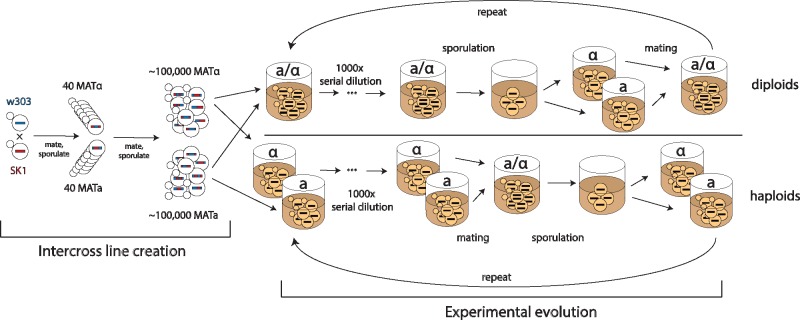Fig. 1.
Schematic describing the line creation and experimental evolution protocol. We created a diverse pool of haploid segregants by two rounds of mating and sporulation. We used the resulting diverse outcrossed population to found 36 haploid and 36 diploid lines. We evolved these lines in batch culture for 960 generations, interspersing periods of asexual mitotic growth with rounds of mating followed by sporulation (for haploids) or sporulation followed by mating (diploids). We varied recombination rate by changing the duration of the asexual mitotic growth phase.

